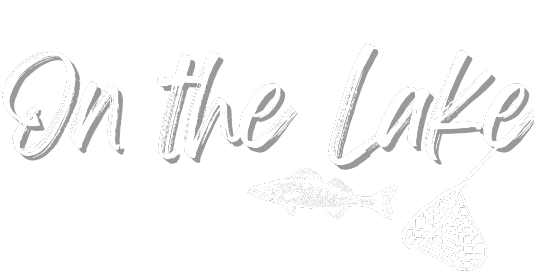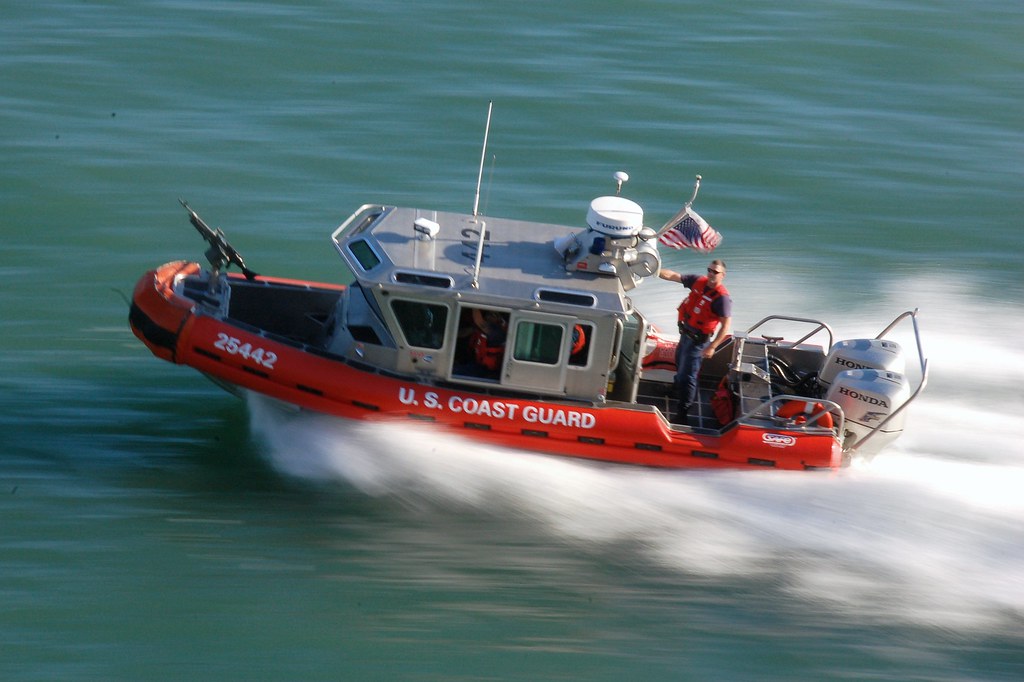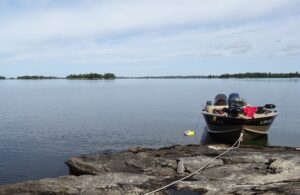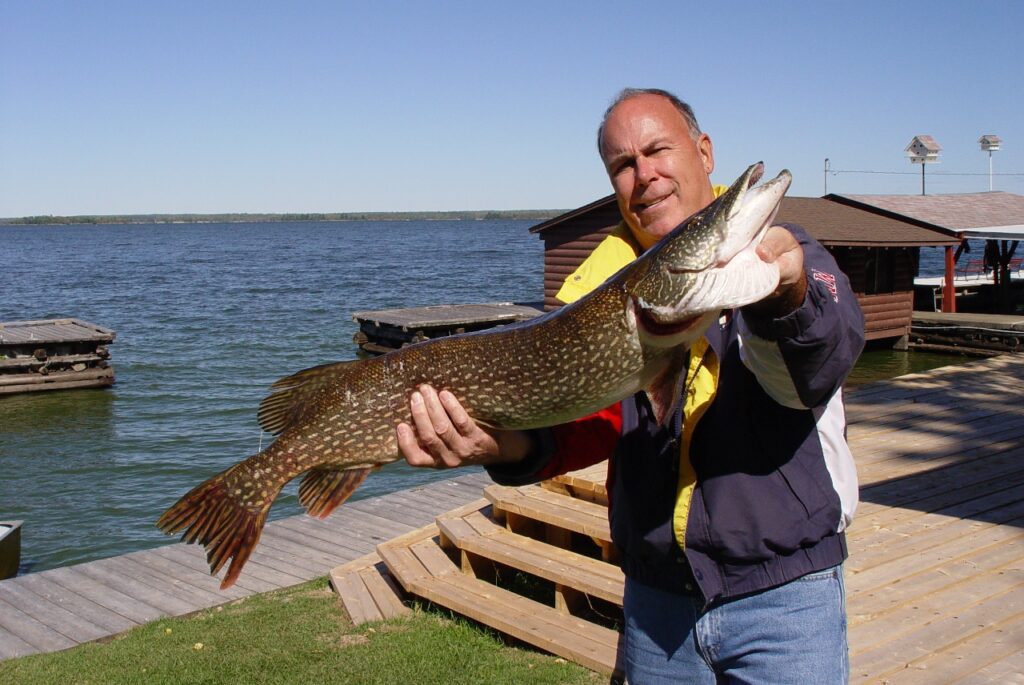Because I don’t have the space to keep my boat in my own garage, I prefer to empty it of the vast majority of its contents, including safety equipment, before it goes into a distant storage facility. (Read more about getting your boat ready for winter.) And that means, even though I have been meticulously following a particular procedure for many years, it also means that I cannot take for granted that everything will find its way back into the boat again come springtime. (Read more about getting your boat ready for spring.)
(This page may contain affiliate links, which means I may earn a small commission if you click through and make a purchase. You can read our Affiliate Disclosure here.)
What’s Needed in My Boat?
A simple list does most of the job for me, but there are certain items that absolutely must be on board. The reason is simple: certain items are necessary in order for me – and any passengers – to be safe (and legal) on the water. Each state may have slightly different requirements/laws about what items are a must, so make sure to check those out for the state(s) into which you will be taking your boat. Boating Regulations by state
A PFD is a Big Deal
The very first and most important thing to have on board is enough properly-fitting and serviceable life jackets (also referred to as Personal Flotation Devices or PFDs) for every person on board. Boats 16 feet and over must have at least one Type IV throwable device as well. Although not designed to be worn, they include boat cushions, ring buoys, and horseshoe buoys and are designed to be thrown to a person in the water.
As tempting as it may be to go boating without wearing a life jacket – especially on nice, sunny days – there’s no excuse not to wear a life jacket on the water! Why? Because modern life jackets are available in an incredible variety of sizes, shapes and colors. Many are extremely thin and flexible. Some are built right into fishing vests. Others are inflatable; they are as compact as a fanny pack until they hit the water, when they automatically fill with air. West Marine carries a great variety of PFDs including ones for your onboard pets!
Most importantly, in the event you or someone in the boat makes an unexpected entry into the water, the PFD can save your life. There are five different categories of PFDs; what is the best type? The one you wear! Read more information about PFDs in a downloadable/printable brochure. You can also read more in another article, “Wearing a PFD: A Real Lifesaver.”
Fire Extinguisher
A second item that gets very little attention is a fire extinguisher. As important as this piece of equipment is – we all should know it is a USCG requirement – you most likely have one aboard. But chances are, you’ve never needed to use one, and might not know the proper technique for using one.
When was the last time you actually had to pull the pin and use one? How do they work? What are the rules regarding having them on board? From Boat U.S.: “The Coast Guard requires boats to have at least one B-1 marine fire extinguisher on board. Depending on the size of your boat you may need more than one. Boats less than 26′ have to have at least one B-1 fire extinguisher on board.”
So, what kind do I get? What is a B1? How many different kinds of fires are there? What do all the numbers mean on the fire extinguisher? Who has the best one? So many questions… A good starting place is to read the directions that are printed on your current fire extinguisher. What it can – and can’t – do may surprise you.
Then it would be a good idea to do a bit of research on the Internet regarding the types of fires and the best type of fire extinguisher used to fight them. One can read posts and discussion threads until blue in the face… without getting a definitive answer for many of the questions that are wont to be answered.
Categories of Fires
Basically, there are five types of fires:
- Class A fires are fires of ordinary combustibles such as wood, paper, cloth, trash, and plastics.
- Class B fires are fires involving flammable liquids and gases such as gasoline, petroleum oil and paint, as well as propane and butane. Class B fires do not include fires involving cooking oils and grease.
- Class C fires are fires involving energized electrical equipment such as motors, transformers, and appliances. Remove the power and the Class C fire becomes one of the other classes of fire.
- Class D fires are fires involving combustible metals such as potassium, sodium, aluminum, and magnesium.
- Class K fires are fires involving cooking oils and greases such as animals fats and vegetable fats.
In order to help remember these types of Fires, try to remember this:
- Class A leaves an ash
- Class B boils
- Class C has current/electricity
- Class D has dense material
- And the most overlooked, Class K for kitchen
At the very least – if your boat is less than 26 feet in length – you’ll need a Coast Guard-approved B1 model (two are even better). Boat U.S. recommends a tri-class (1A:10BC). And be sure to check them at least once per year; to be safe, replace them every 3-5 years.
Signaling Devices
You’ll also need a sound signaling device such as an air horn, bell or whistle. Many boats already have an electric horn as standard equipment, but it’s a good idea to have a back-up. In some states a back-up is required. A loud horn is a great warning device, as well as a way to signal for assistance if needed.
Lastly, you’ll need some sort of visual distress signal. For boats under 16 feet, it’s required only at night; for boats over 16 feet, it’s required both day and night.
The rules vary depending on the specific body of water on which you are boating, so always check the specific rules that apply to you.
Red Hand-held Flare (day and night), Parachute Flare (day and night) and Red Meteor (day and night) are good examples of Visual Distress Signals. And it’s a good idea to also carry a bright orange signal flag as an extra precaution.
Additional Recommendations
Boat U.S. recommends that you also carry these items: flashlight, anchor, VHF radio, some sort of bailer, oars/paddles, first aid kit, extra water and fuel, tool kit, sun protection and a cell phone.
Being prepared for the upcoming boating season by having the necessary items onboard will make your outings not only safer but more enjoyable (not to mention legal) while you’re on the water.
See you On the Lake!
R. Karl








